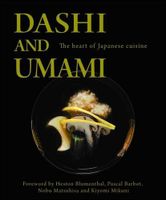🔥 Try our grilling cookbooks and save 25% on ckbk membership with code BBQ25 🔥
Introduction
To the Japanese, dashi is an indispensable part of our diet - it has become part of our bodies. If we go without it for a number of days, we become unsettled. An example of this is the longing for Japanese dishes such as miso soup and udon noodles that emerges whenever Japanese people travel abroad.
Dashi is the foundation of Japanese cuisine, used in a great variety of dishes, including nimonowan (soup dishes), ohitashi (greens in dashi sauce), takiawase (simmered dishes), rice dishes, and many others. Heated or chilled, mixed with or absorbed into other ingredients, its role is extraordinarily important. It is said that if ten chefs were to prepare dashi there would be ten different dashi stocks at the end. As well as these variations there are different kinds of dashi; perhaps the best-loved formula is the combination kombu (kelp seaweed) and katsuobushi (dried bonito flakes).
Become a Premium Member to access this page
Unlimited, ad-free access to hundreds of the world’s best cookbooks
Over 160,000 recipes with thousands more added every month
Recommended by leading chefs and food writers
Powerful search filters to match your tastes
Create collections and add reviews or private notes to any recipe
Swipe to browse each cookbook from cover-to-cover
Manage your subscription via the My Membership page
Advertisement
Advertisement


